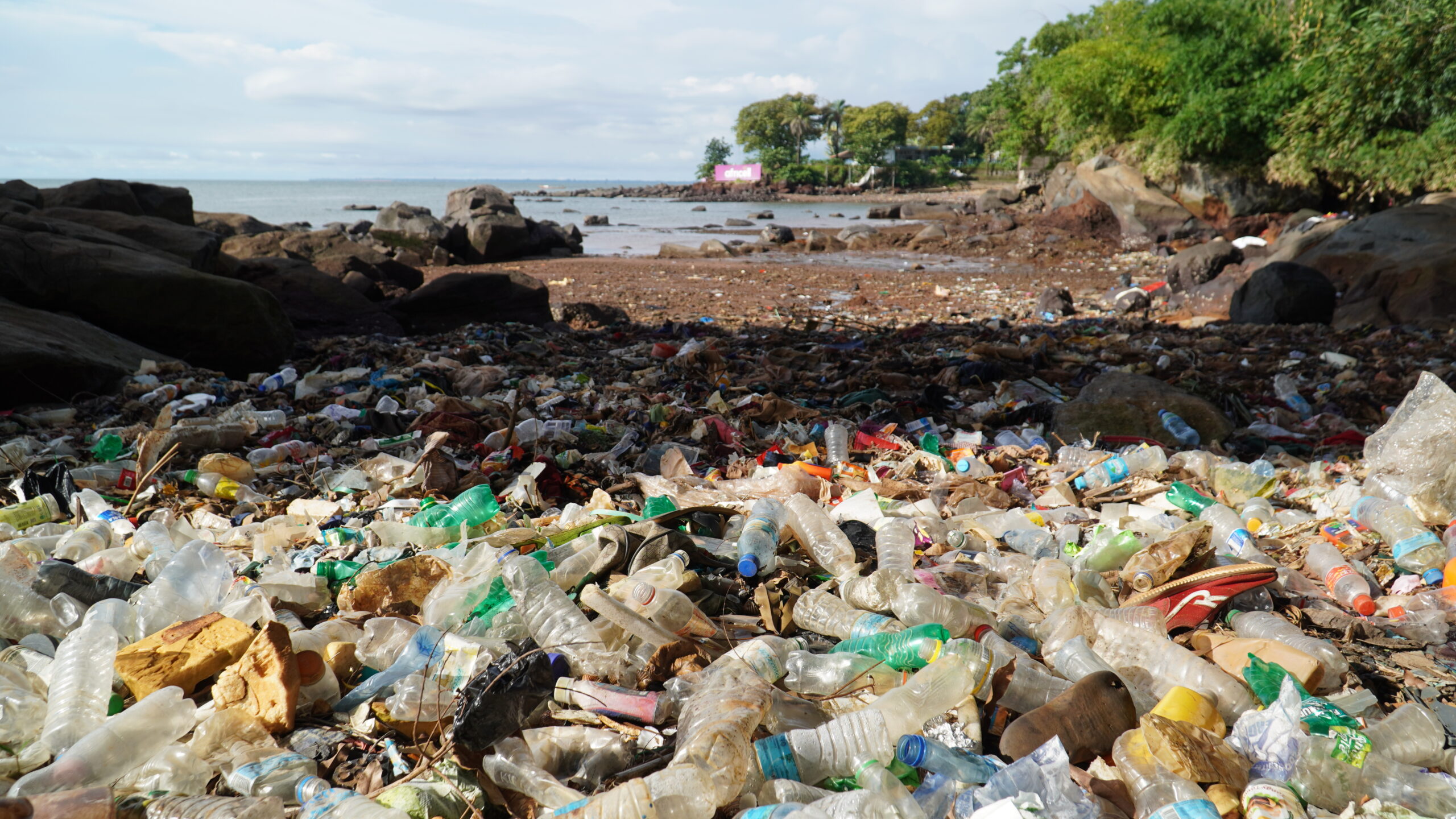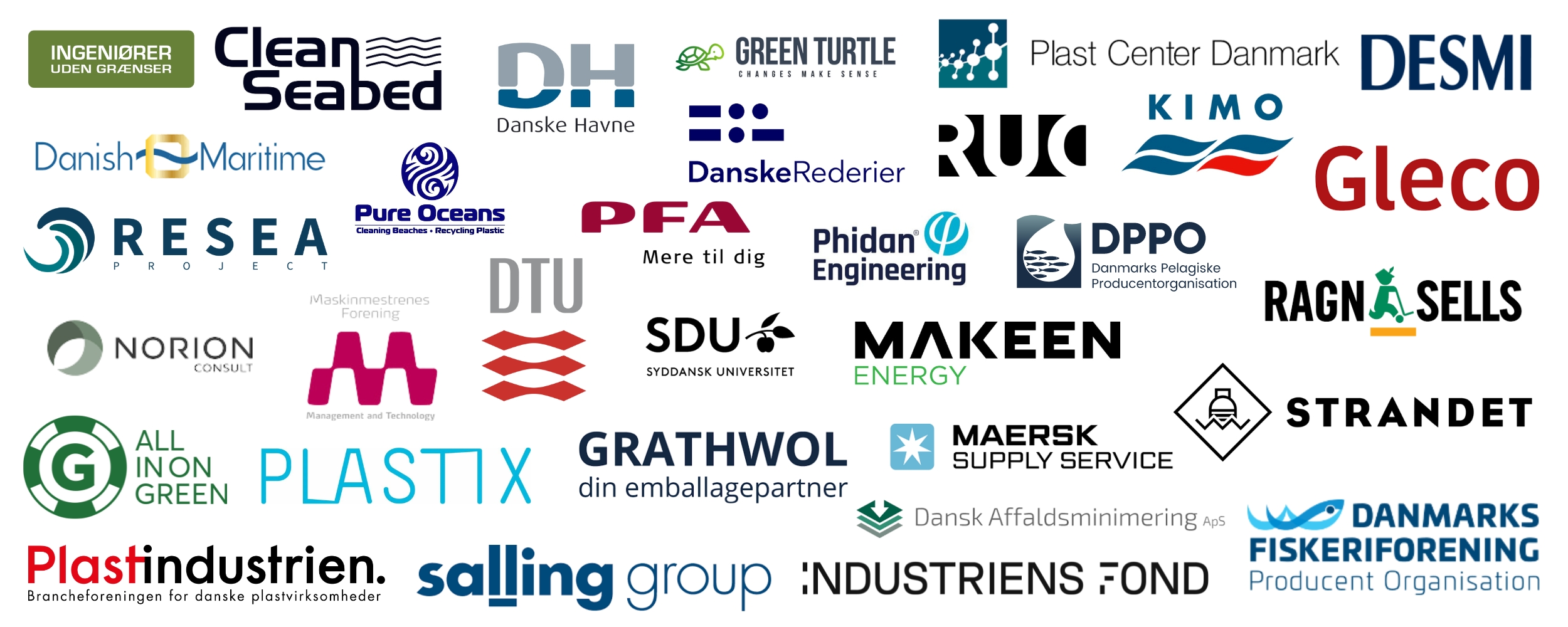The ocean plastic problem
The issue of ocean plastic remains a significant challenge that demands further investigation, particularly with respect to its potential effects on marine biodiversity.
On this page, we have compiled relevant information on this matter to enhance awareness and understanding of this complex issue.

©Engineers Without Borders
What is ocean plastic waste?
Ocean plastic waste is litter made of plastic that has made its way into the ocean. Some of the most common examples of plastic waste include cigarette filters, plastic bags, food wrappers, and derelict fishing gear.
The composition of ocean plastic waste is diverse and typically comprises various plastic types, including polyethylene terephthalate (PET), high-density polyethylene (HDPE), and polyvinyl chloride (PVC). The environmental degradation of ocean plastic waste is often extensive due to exposure to the sun and other harsh elements, resulting in poor recyclability.
Nonetheless, it is important to prioritize recycling efforts as the presence of ocean plastic waste negatively impacts marine life and human well-being.
How big is the problem?
The scale of the issue of ocean plastic waste and its impact on the marine environment is still a matter of ongoing research. The International Union for Conservation of Nature reports that plastic constitutes approximately 80% of all marine debris, with at least 14 million tons of plastic waste entering aquatic ecosystems each year. Projections from UNEP suggest that this figure may increase to 23-27 million tons by 2030.
Due to ocean currents, plastic waste accumulates in specific areas with higher concentrations of plastic pieces than in other parts of the ocean. These accumulation zones are present in the North and South Atlantic Oceans, the Indian Ocean, and the North and South Pacific Oceans. Perhaps the most well-known example is the Great Pacific Garbage Patch, a large area in the Pacific Ocean where a high concentration of plastic waste forms a “plastic soup” that is approximately three times the size of France.
Where does it come from?
According to estimates, the majority (70-80%) of plastic found in oceans is believed to originate from land-based activities, where the plastic waste is transported through rivers and shorelines. The remaining 20-30% of ocean plastic is generated from activities at sea, such as abandoned fishing gear, ropes, and plastic remnants from abandoned vessels.
The 2021 report from UNEP suggests that 67% of all marine plastic is contributed by 20 rivers, primarily situated in Asia. Rivers in the Philippines, Indonesia, India, and China are significant culprits in transferring large amounts of plastic into the ocean. However, it is important to note that ocean plastic waste is not restricted to Asia, and therefore the Ocean Plastic Forum is involved in various projects in Africa as well as other regions.
What can we do?
Addressing the ocean plastic issue is closely linked to the way in which we manage our resources and waste. A significant aspect of the solution is the promotion of a circular economy, which contrasts with the present linear model that involves extracting raw materials, producing goods that are consumed and then discarded. A circular economy is one where resources, including plastics, are part of a cycle, where the worth of materials and goods is preserved for as long as feasible, instead of being discarded in landfills or incineration plants.
Ocean Plastic Forum aims to aid this transition by extracting plastic waste from the oceans and upcycle as much of it as possible into new products in financially viable value chains where participants complement each other’s competencies and collaborate to find solutions and business models.
Why does it matter?
The issue of ocean plastic waste presents a significant challenge with widespread negative impacts on oceanic biodiversity, human health, and the global economy. The UN Environment Programme (UNEP) report from 2021 report highlights the lethal and non-lethal consequences of plastics and microplastics on marine life, including animal entanglement, smothering, collision with larger plastic debris, and ingestion of microplastics with potentially harmful chemicals. The adverse effects of ocean plastic waste can significantly impact the food chain, leading to increased mortality, physical damage, and biodiversity loss.
Numerous studies have highlighted the significance of addressing the issue of ocean plastic waste as a critical aspect of global animal welfare. The American journal Proceedings of the National Academy of Sciences (PNAS), recognized by the UN, reports that plastic is present in approximately 90% of all seabirds, ranging from albatrosses to penguins. In the 1960s, this figure was only 5%. Furthermore, the UN highlights that marine debris, including abandoned fishing gear, contributes to elevated mortality rates among many marine organisms, with particularly detrimental effects on endangered and protected species.
The impact of marine litter and plastic pollution extends beyond marine life and poses potential risks to human physical and mental health. The UN Environment Programme’s report highlights that plastic debris floating in the sea and along coastlines negatively affects people’s mental health. However, the physical effects of human ingestion of microplastics remain uncertain.
According to UNEP, the economic costs of marine plastic pollution are significant and impact multiple sectors, including tourism, fisheries, aquaculture, and clean-up efforts. In 2018, these costs were estimated to be between 6 and 19 billion US dollars worldwide.
Our members and sponsors
Ocean Plastic Forum is a association of 40 members, consisting of interest groups, NGO´s, universities and a number of companies, who all share the same concern about plastic pollution in our oceans. Our member are our biggest asset in bringing our vision of clean oceans to life.

Get involved!
Projects
Explore our ongoing projects and share your ideas for new initiatives.
Membership
Discover our members and learn about what it means to be a part of our community.
Events
Stay up to date on our upcoming events, and workshops, and register to attend.
Stay updated
Stay informed about our projects and developments by subscribing to our newsletter and receiving regular updates from Ocean Plastic Forum.
Ocean Plastic Forum
Sankt Annæ Plads 16
1250 Copenhagen K,
Denmark
CVR-number.: 39860910
Email:
info@oceanplasticforum.dk
Phone:
+45 30 29 30 72

